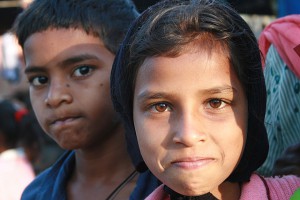Disadvantaged and vulnerable groups

Social protection systems using a rights-based framework should mainstream inclusion in their design, implementation and evaluation to ensure that they are accessible by all those who suffer from structural discrimination (such as women, children, older persons, persons with disabilities, ethnic minorities, indigenous peoples and people living with HIV/AIDS), and do not stigmatize beneficiaries.
Due to various factors— geographic location, sex, age, ability and citizenship; for instance— some groups find themselves facing distinct disadvantages. These conditions may be lifelong, such as one’s ethnicity, or they may change throughout the life cycle, such as age. Policy makers must ensure, therefore, that measures are put in place to overcome these obstacles.
When designing social protection systems and programmes, it is imperative that policy makers make it a priority to address the power imbalance that exists between vulnerable people and the general population to ensure that they are included.
The Committee on Economic, Social and Cultural Rights notes that States parties to the ICESCR are obliged to progressively ensure the right to social security to all individuals within their territories, providing specific protection for disadvantaged and marginalised individuals and groups (CESCR General Comment No. 19, para 31).
Further reading:
- Children
- Indigenous people
- Informal and precarious workers
- LGBTQI+
- Migrants
- Minorities
- Older persons
- Persons living with HIV/AIDS or other chronic illnesses
- Persons with disabilities
- Refugees and asylum seekers
- Rural workers and rural populations
- Youth
- Other disadvantaged or vulnerable groups
Photo credit: “Terre d’Espoir 8” by Anne Roberts (CCBY 2.0 via Flickr).
